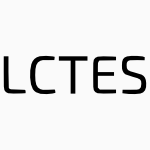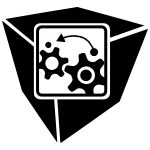240 papers:
 DATE-2015-DuongNXWTBYWW #analysis
DATE-2015-DuongNXWTBYWW #analysis- Coherent crosstalk noise analyses in ring-based optical interconnects (LHKD, MN, JX, ZW, YT, SLB, PY, XW, ZW), pp. 501–506.
 ICSME-2015-XiaLWY #analysis #bibliography #recommendation
ICSME-2015-XiaLWY #analysis #bibliography #recommendation- Who should review this change?: Putting text and file location analyses together for more accurate recommendations (XX, DL, XW, XY), pp. 261–270.
 ICFP-2015-AvanziniLM #complexity #first-order #functional #higher-order #source code
ICFP-2015-AvanziniLM #complexity #first-order #functional #higher-order #source code- Analysing the complexity of functional programs: higher-order meets first-order (MA, UDL, GM), pp. 152–164.
 DHM-HM-2015-ShodaYSS #analysis #behaviour #how #people
DHM-HM-2015-ShodaYSS #analysis #behaviour #how #people- Exploring How People Collaborate with a Stranger: — Analyses of Verbal and Nonverbal Behaviors in Abstract Art Reproduction (HS, TY, NS, MS), pp. 379–388.
 SCSM-2015-HallC #collaboration #information management #performance #process #social
SCSM-2015-HallC #collaboration #information management #performance #process #social- Analysing Yammer Usage Pattern in the Context of Social Collaborative Activity Performance by Knowledge Workers (JH, BBC), pp. 127–137.
 ICEIS-v1-2015-CerqueiraOG #community #framework #network #scalability #social
ICEIS-v1-2015-CerqueiraOG #community #framework #network #scalability #social- A Framework for Analysing Dynamic Communities in Large-scale Social Networks (VC, MDBO, JG), pp. 235–242.
 ICEIS-v1-2015-SabelnikovaCT #approach #case study #outsourcing
ICEIS-v1-2015-SabelnikovaCT #approach #case study #outsourcing- Analysing Business-IT Alignment in the IT Outsourcing Context — A Case Study Approach (ES, CMC, JJMT), pp. 5–16.
 ECOOP-2015-DimovskiBW #abstraction #analysis #precise #variability
ECOOP-2015-DimovskiBW #abstraction #analysis #precise #variability- Variability Abstractions: Trading Precision for Speed in Family-Based Analyses (ASD, CB, AW), pp. 247–270.
 GPCE-2015-El-SharkawyKS #analysis #semantics #tool support
GPCE-2015-El-SharkawyKS #analysis #semantics #tool support- Analysing the Kconfig semantics and its analysis tools (SES, AK, KS), pp. 45–54.
 POPL-2015-GiacobazziLR #analysis #metaprogramming
POPL-2015-GiacobazziLR #analysis #metaprogramming- Analyzing Program Analyses (RG, FL, FR), pp. 261–273.
 SAC-2015-JakobsW #analysis #data flow #proving #source code
SAC-2015-JakobsW #analysis #data flow #proving #source code- Programs from proofs of predicated dataflow analyses (MCJ, HW), pp. 1729–1736.
 SAC-2015-PintoMCS #process #using
SAC-2015-PintoMCS #process #using- Using event logs and the Ψ-theory to analyse business processes (PLP, CM, AC, MMdS), pp. 1195–1202.
 ESEC-FSE-2015-RuscioKKMV #automation #framework #metric #named #open source
ESEC-FSE-2015-RuscioKKMV #automation #framework #metric #named #open source- OSSMETER: a software measurement platform for automatically analysing open source software projects (DDR, DSK, IK, NDM, JJV), pp. 970–973.
 ICSE-v2-2015-ChenGSYH #energy #named #performance
ICSE-v2-2015-ChenGSYH #energy #named #performance- StressCloud: A Tool for Analysing Performance and Energy Consumption of Cloud Applications (FC, JCG, JGS, YY, QH), pp. 721–724.
 HPDC-2015-AlvarezOEAGR #analysis
HPDC-2015-AlvarezOEAGR #analysis- HPC System Lifetime Story: Workload Characterization and Evolutionary Analyses on NERSC Systems (GPRÁ, POÖ, EE, KA, RG, LR), pp. 57–60.
 ISSTA-2015-Narayanaswamy #concurrent #performance
ISSTA-2015-Narayanaswamy #concurrent #performance- When truth is efficient: analysing concurrency (GN), pp. 141–152.
 CASE-2014-HungCYDYW #behaviour #data mining #mining
CASE-2014-HungCYDYW #behaviour #data mining #mining- Data mining for analysing kiosk usage behavior patterns (YSH, KLBC, CTY, GFD, YHY, NCW), pp. 1115–1120.
 DAC-2014-SlijepcevicKAQC #manycore #realtime
DAC-2014-SlijepcevicKAQC #manycore #realtime- Time-Analysable Non-Partitioned Shared Caches for Real-Time Multicore Systems (MS, LK, JA, EQ, FJC), p. 6.
 TACAS-2014-LoweMW #analysis #contest
TACAS-2014-LoweMW #analysis #contest- CPAchecker with Sequential Combination of Explicit-Value Analyses and Predicate Analyses — (Competition Contribution) (SL, MUM, PW), pp. 392–394.
 MSR-2014-MatragkasWKP #ecosystem #git #open source
MSR-2014-MatragkasWKP #ecosystem #git #open source- Analysing the “biodiversity” of open source ecosystems: the GitHub case (NDM, JRW, DSK, RFP), pp. 356–359.
 PLDI-2014-ZhangMGNY #abstraction #analysis #datalog #on the #refinement
PLDI-2014-ZhangMGNY #abstraction #analysis #datalog #on the #refinement- On abstraction refinement for program analyses in Datalog (XZ, RM, RG, MN, HY), p. 27.
 IFM-2014-LaibinisBPTTP #in the cloud #modelling #simulation
IFM-2014-LaibinisBPTTP #in the cloud #modelling #simulation- Integrating Event-B Modelling and Discrete-Event Simulation to Analyse Resilience of Data Stores in the Cloud (LL, BB, IP, ET, KET, IP), pp. 103–119.
 HCI-AIMT-2014-Man #hardware #using #video
HCI-AIMT-2014-Man #hardware #using #video- Analysing Emotional Video Using Consumer EEG Hardware (JdM), pp. 729–738.
 CAiSE-2014-PikaWFHLA #behaviour #framework #using
CAiSE-2014-PikaWFHLA #behaviour #framework #using- An Extensible Framework for Analysing Resource Behaviour Using Event Logs (AP, MTW, CJF, AHMtH, ML, WMPvdA), pp. 564–579.
 AMT-2014-EramoMPR #bidirectional #nondeterminism #towards
AMT-2014-EramoMPR #bidirectional #nondeterminism #towards- Towards Analysing Non-Determinism in Bidirectional Transformations (RE, RM, AP, GR), pp. 76–85.
 OOPSLA-2014-NazareMSBGP #analysis #memory management #validation
OOPSLA-2014-NazareMSBGP #analysis #memory management #validation- Validation of memory accesses through symbolic analyses (HN, IM, WS, LB, LG, FMQP), pp. 791–809.
 LOPSTR-2014-SchreyeNN #compilation #deduction
LOPSTR-2014-SchreyeNN #compilation #deduction- Analysing and Compiling Coroutines with Abstract Conjunctive Partial Deduction (DDS, VN, CJN), pp. 21–38.
 SAC-2014-EliasMFB #algorithm #analysis #memory management
SAC-2014-EliasMFB #algorithm #analysis #memory management- Experimental and theoretical analyses of memory allocation algorithms (DE, RM, MF, LBdA), pp. 1545–1546.
 ICSE-2014-ArztB #analysis #data flow #incremental #named
ICSE-2014-ArztB #analysis #data flow #incremental #named- Reviser: efficiently updating IDE-/IFDS-based data-flow analyses in response to incremental program changes (SA, EB), pp. 288–298.
 ICSE-2014-NadiBKC #analysis #constraints #empirical #mining
ICSE-2014-NadiBKC #analysis #constraints #empirical #mining- Mining configuration constraints: static analyses and empirical results (SN, TB, CK, KC), pp. 140–151.
 SLE-J-2012-KrishnanW #analysis #attribute grammar #composition #higher-order #termination
SLE-J-2012-KrishnanW #analysis #attribute grammar #composition #higher-order #termination- Monolithic and modular termination analyses for higher-order attribute grammars (LK, EVW), pp. 511–526.
 CC-2014-TavaresBPR #analysis #data flow
CC-2014-TavaresBPR #analysis #data flow- Parameterized Construction of Program Representations for Sparse Dataflow Analyses (ALCT, BB, FMQP, FR), pp. 18–39.
 RTA-TLCA-2014-Schmidt-Schauss #analysis #concurrent #programming language #semantics
RTA-TLCA-2014-Schmidt-Schauss #analysis #concurrent #programming language #semantics- Concurrent Programming Languages and Methods for Semantic Analyses (Extended Abstract of Invited Talk) (MSS), pp. 21–30.
 TAP-2014-KosmatovS #analysis #runtime #tutorial
TAP-2014-KosmatovS #analysis #runtime #tutorial- Runtime Assertion Checking and Its Combinations with Static and Dynamic Analyses — Tutorial Synopsis (NK, JS), pp. 165–168.
 VMCAI-2014-Ferrara #abstract interpretation #analysis
VMCAI-2014-Ferrara #abstract interpretation #analysis- Generic Combination of Heap and Value Analyses in Abstract Interpretation (PF), pp. 302–321.
 ASE-2013-SumnerZ #analysis #execution #identification
ASE-2013-SumnerZ #analysis #execution #identification- Identifying execution points for dynamic analyses (WNS, XZ), pp. 81–91.
 DATE-2013-KosmidisAQC #design #realtime
DATE-2013-KosmidisAQC #design #realtime- A cache design for probabilistically analysable real-time systems (LK, JA, EQ, FJC), pp. 513–518.
 ESOP-2013-BeyerHTV #analysis #multi #reachability #reuse
ESOP-2013-BeyerHTV #analysis #multi #reachability #reuse- Information Reuse for Multi-goal Reachability Analyses (DB, AH, MT, HV), pp. 472–491.
 ICSM-2013-LabicheKM #analysis #diagrams
ICSM-2013-LabicheKM #analysis #diagrams- Combining Static and Dynamic Analyses to Reverse-Engineer Scenario Diagrams (YL, BK, HM), pp. 130–139.
 DHM-HB-2013-ZhaoLZ #analysis #higher-order #statistics
DHM-HB-2013-ZhaoLZ #analysis #higher-order #statistics- Higher Order Statistics Analyses Based on the Mathematical Model of Surface Electromyography (YZ, DL, JZ), pp. 402–408.
 HCI-UC-2013-YangRV #industrial #interactive
HCI-UC-2013-YangRV #industrial #interactive- Principled Ways of Finding, Analysing and Planning for Communicative Overhead in Interaction Technology for Fashion Industry (JY, SR, SV), pp. 484–491.
 ICEIS-J-2013-VaniyaBN13a #approach
ICEIS-J-2013-VaniyaBN13a #approach- Analysing the M&A Preparedness Building Approach (NV, PB, ON), pp. 459–473.
 KEOD-2013-NadarajanYC #framework #multi #ontology #performance #scalability #workflow
KEOD-2013-NadarajanYC #framework #multi #ontology #performance #scalability #workflow- Multiple Ontologies Enhanced with Performance Capabilities to Define Interacting Domains within a Workflow Framework for Analysing Large Undersea Videos (GN, CLY, YHCB), pp. 419–426.
 SEKE-2013-RamosRO #process #source code #towards
SEKE-2013-RamosRO #process #source code #towards- Towards a strategy for analysing benefits of Software Process Improvement programs (CSR, ARR, KMdO), pp. 638–643.
 OOPSLA-2013-HuangB #analysis #context-sensitive grammar #memory management #performance
OOPSLA-2013-HuangB #analysis #context-sensitive grammar #memory management #performance- Efficient context sensitivity for dynamic analyses via calling context uptrees and customized memory management (JH, MDB), pp. 53–72.
 PADL-2013-GiorgidzeGHK #database #haskell #wiki
PADL-2013-GiorgidzeGHK #database #haskell #wiki- Analysing the Entire Wikipedia History with Database Supported Haskell (GG, TG, IH, MK), pp. 19–25.
 SAC-2013-CelestiniNT #coordination #specification
SAC-2013-CelestiniNT #coordination #specification- Specifying and analysing reputation systems with a coordination language (AC, RDN, FT), pp. 1363–1368.
 ESEC-FSE-2013-MusluBEN #analysis
ESEC-FSE-2013-MusluBEN #analysis- Making offline analyses continuous (KM, YB, MDE, DN), pp. 323–333.
 CADE-2013-BeckertGS #algorithm #logic
CADE-2013-BeckertGS #algorithm #logic- Analysing Vote Counting Algorithms via Logic — And Its Application to the CADE Election Scheme (BB, RG, CS), pp. 135–144.
 ICST-2013-FryW #analysis #maintenance
ICST-2013-FryW #analysis #maintenance- Leveraging Light-Weight Analyses to Aid Software Maintenance (ZPF, WW), pp. 507–508.
 DATE-2012-GerdesKURS #realtime
DATE-2012-GerdesKURS #realtime- Time analysable synchronisation techniques for parallelised hard real-time applications (MG, FK, TU, CR, PS), pp. 671–676.
 PLDI-2012-AlbarghouthiKNR #analysis #interprocedural #top-down
PLDI-2012-AlbarghouthiKNR #analysis #interprocedural #top-down- Parallelizing top-down interprocedural analyses (AA, RK, AVN, SKR), pp. 217–228.
 PLDI-2012-OhHLLY #analysis #design #implementation
PLDI-2012-OhHLLY #analysis #design #implementation- Design and implementation of sparse global analyses for C-like languages (HO, KH, WL, WL, KY), pp. 229–238.
 SAS-2012-DSilvaHK #satisfiability
SAS-2012-DSilvaHK #satisfiability- Satisfiability Solvers Are Static Analysers (VD, LH, DK), pp. 317–333.
 SAS-2012-Krishnamurthi #analysis #javascript #semantics #web
SAS-2012-Krishnamurthi #analysis #javascript #semantics #web- Semantics and Analyses for JavaScript and the Web (SK), p. 4.
 IFM-2012-BlackmoreHBER #automation #generative #simulation #verification
IFM-2012-BlackmoreHBER #automation #generative #simulation #verification- Analysing and Closing Simulation Coverage by Automatic Generation and Verification of Formal Properties from Coverage Reports (TB, DH, PB, KE, NR), pp. 84–98.
 SEFM-2012-FerraraFJ #analysis
SEFM-2012-FerraraFJ #analysis- TVAL+ : TVLA and Value Analyses Together (PF, RF, UJ), pp. 63–77.
 ICML-2012-TangSH
ICML-2012-TangSH- Deep Mixtures of Factor Analysers (YT, RS, GEH), p. 147.
 ICPR-2012-WangWZJ #analysis #bias #database
ICPR-2012-WangWZJ #analysis #bias #database- Bias analyses of spontaneous facial expression database (ZW, SW, YZ, QJ), pp. 2926–2929.
 RE-2012-Hoffmann #approach #requirements
RE-2012-Hoffmann #approach #requirements- A Pattern-based approach for analysing requirements in socio-technical systems engineering (AH), pp. 341–344.
 RE-2012-TunBPYHON #mobile #privacy #requirements
RE-2012-TunBPYHON #mobile #privacy #requirements- Privacy arguments: Analysing selective disclosure requirements for mobile applications (TTT, AKB, BAP, YY, CBH, IO, BN), pp. 131–140.
 SAC-2012-TangJ #analysis #precise
SAC-2012-TangJ #analysis #precise- Exploiting regularity of user-defined types to improve precision of program analyses (XT, JJ), pp. 1743–1750.
 ASPLOS-2012-OlszewskiZKAA #analysis #named
ASPLOS-2012-OlszewskiZKAA #analysis #named- Aikido: accelerating shared data dynamic analyses (MO, QZ, DK, JA, SPA), pp. 173–184.
 CAV-2012-BerdineCIW #abstraction #analysis
CAV-2012-BerdineCIW #abstraction #analysis- Diagnosing Abstraction Failure for Separation Logic-Based Analyses (JB, AC, SI, CMW), pp. 155–173.
 ICST-2012-GansR #protocol #smarttech #testing
ICST-2012-GansR #protocol #smarttech #testing- The SmartLogic Tool: Analysing and Testing Smart Card Protocols (GdKG, JdR), pp. 864–871.
 CSMR-2011-MensDHVK #evolution #modelling #named #quality
CSMR-2011-MensDHVK #evolution #modelling #named #quality- QUALGEN: Modeling and Analysing the Quality of Evolving Software Systems (TM, LD, NH, BV, FK), pp. 351–354.
 SEFM-2011-TongSJ #approach #formal method #information management #process
SEFM-2011-TongSJ #approach #formal method #information management #process- A Formal Approach to Analysing Knowledge Transfer Processes in Developing Countries (JT, SAS, AEJ), pp. 486–501.
 CHI-2011-WobbrockFGH #analysis #parametricity #rank #using
CHI-2011-WobbrockFGH #analysis #parametricity #rank #using- The aligned rank transform for nonparametric factorial analyses using only anova procedures (JOW, LF, DG, JJH), pp. 143–146.
 CSCW-2011-MarshallRP #interactive #physics #using
CSCW-2011-MarshallRP #interactive #physics #using- Using F-formations to analyse spatial patterns of interaction in physical environments (PM, YR, NP), pp. 445–454.
 KEOD-2011-KohnMSL #complexity #ontology
KEOD-2011-KohnMSL #complexity #ontology- Use of Existing Ontologies as Input for Structural Complexity Management — Reducing the Effort for Analysing and Improving Engineering Systems (AK, MM, HXS, UL), pp. 195–201.
 PADL-2011-MantadelisPJVB #ad hoc #mobile #network
PADL-2011-MantadelisPJVB #ad hoc #mobile #network- Analysing a Publish/Subscribe System for Mobile Ad Hoc Networks with ProbLog (TM, KP, GJ, YV, YB), pp. 34–37.
 SAC-2011-CordovillaBNP #multi #scheduling
SAC-2011-CordovillaBNP #multi #scheduling- Multiprocessor schedulability analyser (MC, FB, EN, CP), pp. 735–741.
 ISSTA-2011-LeS #analysis #detection #fault #generative
ISSTA-2011-LeS #analysis #detection #fault #generative- Generating analyses for detecting faults in path segments (WL, MLS), pp. 320–330.
 RTA-2011-KochemsO #analysis #functional #linear #reachability #using
RTA-2011-KochemsO #analysis #functional #linear #reachability #using- Improved Functional Flow and Reachability Analyses Using Indexed Linear Tree Grammars (JK, CHLO), pp. 187–202.
 MSR-2010-NiaBDF #analysis #network #open source
MSR-2010-NiaBDF #analysis #network #open source- Validity of network analyses in Open Source Projects (RN, CB, PTD, VF), pp. 201–209.
 SCAM-2010-EdvinssonLL #analysis #parallel #reachability
SCAM-2010-EdvinssonLL #analysis #parallel #reachability- Parallel Reachability and Escape Analyses (ME, JL, WL), pp. 125–134.
 PLDI-2010-BondBG #analysis #context-sensitive grammar #debugging #detection #named #performance
PLDI-2010-BondBG #analysis #context-sensitive grammar #debugging #detection #named #performance- Breadcrumbs: efficient context sensitivity for dynamic bug detection analyses (MDB, GZB, SZG), pp. 13–24.
 CIKM-2010-BronBR #analysis #component #ranking
CIKM-2010-BronBR #analysis #component #ranking- Ranking related entities: components and analyses (MB, KB, MdR), pp. 1079–1088.
 ICSE-2010-LimQF #named #network #scalability #social #using
ICSE-2010-LimQF #named #network #scalability #social #using- StakeNet: using social networks to analyse the stakeholders of large-scale software projects (SLL, DQ, AF), pp. 295–304.
 ICSE-2010-SutcliffeT #people #problem #requirements
ICSE-2010-SutcliffeT #people #problem #requirements- Analysing “people” problems in requirements engineering (AGS, ST), pp. 469–470.
 SLE-2010-GenonHA #effectiveness
SLE-2010-GenonHA #effectiveness- Analysing the Cognitive Effectiveness of the BPMN 2.0 Visual Notation (NG, PH, DA), pp. 377–396.
 ICST-2010-SeguraHBR #analysis #approach #automation #feature model #generative #modelling #testing
ICST-2010-SeguraHBR #analysis #approach #automation #feature model #generative #modelling #testing- Automated Test Data Generation on the Analyses of Feature Models: A Metamorphic Testing Approach (SS, RMH, DB, ARC), pp. 35–44.
 ISSTA-2010-BaoZLZX #analysis #data flow #dependence #information management #strict
ISSTA-2010-BaoZLZX #analysis #data flow #dependence #information management #strict- Strict control dependence and its effect on dynamic information flow analyses (TB, YZ, ZL, XZ, DX), pp. 13–24.
 ASE-2009-YuAB #analysis #generative #source code #string #using
ASE-2009-YuAB #analysis #generative #source code #string #using- Generating Vulnerability Signatures for String Manipulating Programs Using Automata-Based Forward and Backward Symbolic Analyses (FY, MA, TB), pp. 605–609.
 DAC-2009-KimRH #analysis #probability
DAC-2009-KimRH #analysis #probability- Stochastic steady-state and AC analyses of mixed-signal systems (JK, JR, MAH), pp. 376–381.
 SCAM-2009-GutzmannKLL #analysis #points-to #towards
SCAM-2009-GutzmannKLL #analysis #points-to #towards- Towards Comparing and Combining Points-to Analyses (TG, AK, JL, WL), pp. 45–54.
 PEPM-2009-FradeSU #analysis #bidirectional #data flow
PEPM-2009-FradeSU #analysis #bidirectional #data flow- Bidirectional data-flow analyses, type-systematically (MJF, AS, TU), pp. 141–150.
 LATA-2009-LiuM #automation #complexity
LATA-2009-LiuM #automation #complexity- Analysing Complexity in Classes of Unary Automatic Structures (JL, MM), pp. 518–529.
 DHM-2009-DemirelD #analysis #feedback
DHM-2009-DemirelD #analysis #feedback- Impact of Force Feedback on Computer Aided Ergonomic Analyses (HOD, VGD), pp. 608–613.
 HCI-NIMT-2009-ElliottCR #bibliography #visual notation
HCI-NIMT-2009-ElliottCR #bibliography #visual notation- Overview of Meta-analyses Investigating Vibrotactile versus Visual Display Options (LRE, MDC, ESR), pp. 435–443.
 HIMI-DIE-2009-HorvathLK #analysis #approach #data mining #mining #usability
HIMI-DIE-2009-HorvathLK #analysis #approach #data mining #mining #usability- Usability Analyses of CRM Systems in Call Centers: The Data Mining Approach (ÁH, LL, AK), pp. 40–48.
 SIGIR-2009-CloughSANP #multi #query
SIGIR-2009-CloughSANP #multi #query- Multiple approaches to analysing query diversity (PDC, MS, MA, SN, MLP), pp. 734–735.
 OOPSLA-2009-BravenboerS #analysis #declarative #points-to #specification #strict
OOPSLA-2009-BravenboerS #analysis #declarative #points-to #specification #strict- Strictly declarative specification of sophisticated points-to analyses (MB, YS), pp. 243–262.
 GPCE-2009-WillcockLQ #analysis #reuse
GPCE-2009-WillcockLQ #analysis #reuse- Reusable, generic program analyses and transformations (JW, AL, DJQ), pp. 5–14.
 ESEC-FSE-2009-BeltRD #analysis #lightweight #optimisation #symbolic computation
ESEC-FSE-2009-BeltRD #analysis #lightweight #optimisation #symbolic computation- Sireum/Topi LDP: a lightweight semi-decision procedure for optimizing symbolic execution-based analyses (JB, R, XD), pp. 355–364.
 LCTES-2009-FidgeC #analysis #data flow #hardware
LCTES-2009-FidgeC #analysis #data flow #hardware- Integrating hardware and software information flow analyses (CJF, DC), pp. 157–166.
 ICLP-2009-Raiser #constraints #graph transformation #research #summary #using
ICLP-2009-Raiser #constraints #graph transformation #research #summary #using- Analysing Graph Transformation Systems Using Extended Methods from Constraint Handling Rules (Research Summary) (FR), pp. 540–541.
 QoSA-2008-WaignierMD #analysis #architecture #specification
QoSA-2008-WaignierMD #analysis #architecture #specification- Architectural Specification and Static Analyses of Contractual Application Properties (GW, AFLM, LD), pp. 152–170.
 WICSA-2008-KeulerMU #analysis #architecture #performance #quality
WICSA-2008-KeulerMU #analysis #architecture #performance #quality- Efficient Quality Impact Analyses for Iterative Architecture Construction (TK, DM, TU), pp. 19–28.
 ASE-2008-DIppolitoFCU #named
ASE-2008-DIppolitoFCU #named- MTSA: The Modal Transition System Analyser (ND, DF, MC, SU), pp. 475–476.
 CASE-2008-NandakumarHM #analysis #automation #flexibility #framework #interactive
CASE-2008-NandakumarHM #analysis #automation #flexibility #framework #interactive- A flexible framework for automation of single cell and cell-to-cell interaction analyses (VN, MH, DRM), pp. 424–430.
 ICSM-2008-AntoniolHGP #cost analysis #reuse
ICSM-2008-AntoniolHGP #cost analysis #reuse- Reuse or rewrite: Combining textual, static, and dynamic analyses to assess the cost of keeping a system up-to-date (GA, JHH, YGG, MDP), pp. 147–156.
 PLDI-2008-DincklageD #analysis
PLDI-2008-DincklageD #analysis- Explaining failures of program analyses (DvD, AD), pp. 260–269.
 SAS-2008-SeidlFP #equation #polynomial
SAS-2008-SeidlFP #equation #polynomial- Analysing All Polynomial Equations in ℤ₂ᵂ (HS, AF, MP), pp. 299–314.
 SEFM-2008-GuoS #finite #impact analysis #proving #state machine #theorem proving #using
SEFM-2008-GuoS #finite #impact analysis #proving #state machine #theorem proving #using- Formal Change Impact Analyses of Extended Finite State Machines Using a Theorem Prover (BG, MS), pp. 335–344.
 ICMT-2008-CabotCGL #graph transformation #ocl
ICMT-2008-CabotCGL #graph transformation #ocl- Analysing Graph Transformation Rules through OCL (JC, RC, EG, JdL), pp. 229–244.
 SAC-2008-VellosoR #algorithm #analysis
SAC-2008-VellosoR #algorithm #analysis- Percolation analyses in a swarm based algorithm for shortest-path finding (BPV, MR), pp. 1861–1865.
 ISMM-2008-ChinNPQ #bound #low level #memory management #source code
ISMM-2008-ChinNPQ #bound #low level #memory management #source code- Analysing memory resource bounds for low-level programs (WNC, HHN, CP, SQ), pp. 151–160.
 ESOP-2007-SeidlFP #difference #linear
ESOP-2007-SeidlFP #difference #linear- Interprocedurally Analysing Linear Inequality Relations (HS, AF, MP), pp. 284–299.
 ICSM-2007-Salahuddin #testing #using
ICSM-2007-Salahuddin #testing #using- Analysing the Impact of Change on Test Sets Using X-Machines (SS), pp. 511–512.
 PASTE-2007-Brown #analysis #composition #integration #named
PASTE-2007-Brown #analysis #composition #integration #named- AWE: improving software analysis through modular integration of static and dynamic analyses (REB), pp. 69–74.
 WCRE-2007-Staiger #analysis #reverse engineering #user interface #using #visual notation
WCRE-2007-Staiger #analysis #reverse engineering #user interface #using #visual notation- Reverse Engineering of Graphical User Interfaces Using Static Analyses (SS), pp. 189–198.
 SEKE-2007-AnnoniRT #analysis #process #requirements
SEKE-2007-AnnoniRT #analysis #process #requirements- Data and Process Analyses of Data Warehouse Requirements (EA, FR, OT), pp. 191–196.
 PADL-2007-EichbergKSMO #analysis #automation #prolog
PADL-2007-EichbergKSMO #analysis #automation #prolog- Automatic Incrementalization of Prolog Based Static Analyses (ME, MK, DS, MM, KO), pp. 109–123.
 POPL-2007-BerdineCCDO #analysis
POPL-2007-BerdineCCDO #analysis- Variance analyses from invariance analyses (JB, AC, BC, DD, PWO), pp. 211–224.
 SAC-2007-ShinH #analysis #automation #comparison #difference #process
SAC-2007-ShinH #analysis #automation #comparison #difference #process- Comparison of two activity analyses for automatic differentiation: context-sensitive flow-insensitive vs. context-insensitive flow-sensitive (JS, PDH), pp. 1323–1329.
 VMCAI-2007-Lev-AmiSIR #analysis
VMCAI-2007-Lev-AmiSIR #analysis- Constructing Specialized Shape Analyses for Uniform Change (TLA, MS, NI, TWR), pp. 215–233.
 ASE-2006-EichbergMKOR #analysis #scheduling #set
ASE-2006-EichbergMKOR #analysis #scheduling #set- Integrating and Scheduling an Open Set of Static Analyses (ME, MM, SK, KO, BR), pp. 113–122.
 ICSM-2006-ShenM #architecture #named
ICSM-2006-ShenM #architecture #named- ESDM — A Method for Developing Evolutionary Scenarios for Analysing the Impact of Historical Changes on Architectural Elements (YS, NHM), pp. 45–54.
 MSR-2006-KimN #analysis #multi
MSR-2006-KimN #analysis #multi- Program element matching for multi-version program analyses (MK, DN), pp. 58–64.
 ICFP-2006-MightS #analysis #garbage collection
ICFP-2006-MightS #analysis #garbage collection- Improving flow analyses via ΓCFA: abstract garbage collection and counting (MM, OS), pp. 13–25.
 SEKE-2006-ZiemerSS #approach #development #modelling #requirements #trade-off #web
SEKE-2006-ZiemerSS #approach #development #modelling #requirements #trade-off #web- A Decision Modelling Approach for Analysing Requirements Configuration Trade-offs in Timeconstrained Web Application Development (SZ, PRFS, TS), pp. 144–149.
 GPCE-2006-KaminAK #analysis #generative #staging
GPCE-2006-KaminAK #analysis #generative #staging- Staging static analyses for program generation (SK, BA, MK), pp. 1–10.
 QAPL-2006-SotinCJ #behaviour #java #static analysis
QAPL-2006-SotinCJ #behaviour #java #static analysis- Quantitative Static Analysis Over Semirings: Analysing Cache Behaviour for Java Card (PS, DC, TPJ), pp. 153–167.
 ICLP-2006-CabalarOPV #equilibrium #logic #semantics #using
ICLP-2006-CabalarOPV #equilibrium #logic #semantics #using- Analysing and Extending Well-Founded and Partial Stable Semantics Using Partial Equilibrium Logic (PC, SPO, DP, AV), pp. 346–360.
 RTA-2006-Turuani #protocol
RTA-2006-Turuani #protocol- The CL-Atse Protocol Analyser (MT), pp. 277–286.
 VMCAI-2006-ArnoldMSS #abstraction #analysis
VMCAI-2006-ArnoldMSS #abstraction #analysis- Combining Shape Analyses by Intersecting Abstractions (GA, RM, MS, RS), pp. 33–48.
 ASE-2005-ShepherdPPC #analysis #automation #framework #mining #named
ASE-2005-ShepherdPPC #analysis #automation #framework #mining #named- Timna: a framework for automatically combining aspect mining analyses (DCS, JP, LLP, MCC), pp. 184–193.
 CASE-2005-MeldrumHFSMRPMCDW #analysis
CASE-2005-MeldrumHFSMRPMCDW #analysis- Sample preparation in glass capillaries for high-throughput biochemical analyses (DRM, MH, CHF, MSS, SKM, TTHR, WHP, SEM, DLC, DAD, PJW), pp. 7–12.
 MSR-2005-ConklinHC #analysis #collaboration #repository #using
MSR-2005-ConklinHC #analysis #collaboration #repository #using- Collaboration using OSSmole: a repository of FLOSS data and analyses (MC, JH, KC), pp. 76–80.
 PASTE-2005-PickettV #framework #java #multi #named #thread
PASTE-2005-PickettV #framework #java #multi #named #thread- SableSpMT: a software framework for analysing speculative multithreading in Java (CJFP, CV), pp. 59–66.
 FM-2005-Johnson #debugging #formal method #using
FM-2005-Johnson #debugging #formal method #using- The Natural History of Bugs: Using Formal Methods to Analyse Software Related Failures in Space Missions (CWJ), pp. 9–25.
 VISSOFT-2005-SmithM #identification #interactive #java #runtime #source code
VISSOFT-2005-SmithM #identification #interactive #java #runtime #source code- Identifying Structural Features of Java Programs by Analysing the Interaction of Classes at Runtime (MPS, MM), pp. 108–113.
 ICEIS-v3-2005-KloseKB #integration #modelling #process #specification
ICEIS-v3-2005-KloseKB #integration #modelling #process #specification- Process Modelling for Service Processes — Modelling Methods Extensions for Specifying and Analysing Customer Integration (KK, RK, JB), pp. 260–265.
 POPL-2005-LernerMRC #analysis #automation #data flow #proving
POPL-2005-LernerMRC #analysis #automation #data flow #proving- Automated soundness proofs for dataflow analyses and transformations via local rules (SL, TDM, ER, CC), pp. 364–377.
 GTTSE-2005-BenavidesSMC #analysis #automation #csp #feature model #java #modelling #using
GTTSE-2005-BenavidesSMC #analysis #automation #csp #feature model #java #modelling #using- Using Java CSP Solvers in the Automated Analyses of Feature Models (DB, SS, PTMA, ARC), pp. 399–408.
 COCV-J-2005-SalcianuA #analysis #correctness #data flow #proving
COCV-J-2005-SalcianuA #analysis #correctness #data flow #proving- Machine-Checkable Correctness Proofs for Intra-procedural Dataflow Analyses (AS, KA), pp. 53–68.
 ICLP-2005-GallagherHB #analysis #scalability
ICLP-2005-GallagherHB #analysis #scalability- Techniques for Scaling Up Analyses Based on Pre-interpretations (JPG, KSH, GB), pp. 280–296.
 ICLP-2005-Schrijvers #analysis #constraints #optimisation #summary
ICLP-2005-Schrijvers #analysis #constraints #optimisation #summary- Analyses, Optimizations and Extensions of Constraint Handling Rules: Ph.D. Summary (TS), pp. 435–436.
 ESOP-2004-CacheraJPR #data flow #logic
ESOP-2004-CacheraJPR #data flow #logic- Extracting a Data Flow Analyser in Constructive Logic (DC, TPJ, DP, VR), pp. 385–400.
 CSMR-2004-AntoniolP #analysis #architecture #distributed
CSMR-2004-AntoniolP #analysis #architecture #distributed- A Distributed Architecture for Dynamic Analyses on User-Profile Data (GA, MDP), pp. 319–328.
 ICSM-2004-MerloAPR #analysis #clone detection #complexity #detection #evolution #linear #object-oriented #similarity
ICSM-2004-MerloAPR #analysis #clone detection #complexity #detection #evolution #linear #object-oriented #similarity- Linear Complexity Object-Oriented Similarity for Clone Detection and Software Evolution Analyses (EM, GA, MDP, VFR), pp. 412–416.
 PASTE-2004-Ezick #analysis #constraints #query
PASTE-2004-Ezick #analysis #constraints #query- Resolving and applying constraint queries on context-sensitive analyses (JE), pp. 2–7.
 WCRE-2004-Harrold #analysis #control flow #source code
WCRE-2004-Harrold #analysis #control flow #source code- Static and Dynamic Analyses of Programs with Implicit Control Flow (MJH), p. 5.
 FLOPS-2004-IranzoL
FLOPS-2004-IranzoL- Analysing Definitional Trees: Looking for Determinism (PJI, CVL), pp. 55–69.
 CAiSE-2004-EderKM #detection #slicing
CAiSE-2004-EderKM #detection #slicing- Analysing Slices of Data Warehouses to Detect Structural Modifications (JE, CK, DM), pp. 492–505.
 ICEIS-v1-2004-HendersonW #enterprise #modelling #simulation
ICEIS-v1-2004-HendersonW #enterprise #modelling #simulation- Information Invasion in Enterprise Systems: Modelling, Simulating and Analysing System-Level Information Propagation (PH, SC, RJW), pp. 473–481.
 ICEIS-v3-2004-MouratidisGM #design #information management #security #using
ICEIS-v3-2004-MouratidisGM #design #information management #security #using- Using Security Attack Scenarios to Analyse Security During Information Systems Design (HM, PG, GAM), pp. 10–17.
 ICPR-v1-2004-SalahA #incremental
ICPR-v1-2004-SalahA #incremental- Incremental Mixtures of Factor Analysers (AAS, EA), pp. 276–279.
 PDCL-2004-HoweKL #logic programming #reasoning #source code
PDCL-2004-HoweKL #logic programming #reasoning #source code- Analysing Logic Programs by Reasoning Backwards (JMH, AK, LL), pp. 152–188.
 POPL-2004-Benton #analysis #correctness #program transformation #proving #relational
POPL-2004-Benton #analysis #correctness #program transformation #proving #relational- Simple relational correctness proofs for static analyses and program transformations (NB), pp. 14–25.
 DATE-2003-ChakrabortyKT #design #embedded #framework
DATE-2003-ChakrabortyKT #design #embedded #framework- A General Framework for Analysing System Properties in Platform-Based Embedded System Designs (SC, SK, LT), pp. 10190–10195.
 SCAM-2003-BinkleyH #algorithm #analysis #graph #optimisation #performance #reachability #scalability #source code
SCAM-2003-BinkleyH #algorithm #analysis #graph #optimisation #performance #reachability #scalability #source code- Results from a Large-Scale Study of Performance Optimization Techniques for Source Code Analyses Based on Graph Reachability Algorithms (DB, MH), p. 203–?.
 IFL-2003-SeguraP #analysis #correctness #nondeterminism
IFL-2003-SeguraP #analysis #correctness #nondeterminism- Correctness of Non-determinism Analyses in a Parallel-Functional Language (CS, RP), pp. 69–85.
 CAiSE-2003-EmburyS #constraints #information management
CAiSE-2003-EmburyS #constraints #information management- Analysing the Impact of Adding Integrity Constraints to Information Systems (SME, JS), pp. 175–192.
 ICEIS-v3-2003-Lyytikainen #content management #requirements
ICEIS-v3-2003-Lyytikainen #content management #requirements- Analysing Requirements for Content Management (VL), pp. 104–111.
 ICEIS-v3-2003-MouratidisMGG #information management #requirements #security #using
ICEIS-v3-2003-MouratidisMGG #information management #requirements #security #using- Analysing Security Requirements of Information Systems Using Tropos (HM, GAM, AG, PG), pp. 623–626.
 SEKE-2003-DongSWLL #alloy #case study #ontology #web
SEKE-2003-DongSWLL #alloy #case study #ontology #web- Analysing Web Ontology in Alloy: A Military Case Study (JSD, JS, HHW, CHL, HBL), pp. 542–546.
 GPCE-2003-Kastner #analysis #hardware #named #optimisation
GPCE-2003-Kastner #analysis #hardware #named #optimisation- TDL: A Hardware Description Language for Retargetable Postpass Optimizations and Analyses (DK), pp. 18–36.
 RE-2003-LinNIJM #requirements #security
RE-2003-LinNIJM #requirements #security- Introducing Abuse Frames for Analysing Security Requirements (LL, BN, DCI, MJ, JDM), pp. 371–372.
 DATE-2002-ZhengPBK #analysis #modelling #scalability
DATE-2002-ZhengPBK #analysis #modelling #scalability- Window-Based Susceptance Models for Large-Scale RLC Circuit Analyses (HZ, LTP, MWB, BK), pp. 628–633.
 ESOP-2002-WandW #analysis #composition #proving
ESOP-2002-WandW #analysis #composition #proving- A Modular, Extensible Proof Method for Small-Step Flow Analyses (MW, GBW), pp. 213–227.
 PASTE-2002-Naumovich #analysis #data flow #design pattern #implementation #using
PASTE-2002-Naumovich #analysis #data flow #design pattern #implementation #using- Using the observer design pattern for implementation of data flow analyses (GN), pp. 61–68.
 PLDI-2002-HallemCXE #analysis
PLDI-2002-HallemCXE #analysis- A System and Language for Building System-Specific, Static Analyses (SH, BC, YX, DRE), pp. 69–82.
 PLDI-2002-RamalingamWFGS #analysis #component #consistency
PLDI-2002-RamalingamWFGS #analysis #component #consistency- Deriving Specialized Program Analyses for Certifying Component-Client Conformance (GR, AV, JF, DG, SS), pp. 83–94.
 SAS-2002-PierroHW #approximate
SAS-2002-PierroHW #approximate- Analysing Approximate Confinement under Uniform Attacks (ADP, CH, HW), pp. 310–325.
 SAS-2002-Ruf #analysis #data flow #precise
SAS-2002-Ruf #analysis #data flow #precise- Improving the Precision of Equality-Based Dataflow Analyses (ER), pp. 247–262.
 EDOC-2002-SalinesiP #adaptation #information management
EDOC-2002-SalinesiP #adaptation #information management- A Method to Analyse Changes in the Realisation of Business Intentions and Strategies for Information System Adaptation (CS, MJP), pp. 84–95.
 ICEIS-2002-BaranauskasSL #communication
ICEIS-2002-BaranauskasSL #communication- Analysing Communication in the Context of a Software Production Organisation (MCCB, JPS, KL), pp. 562–569.
 ICEIS-2002-EstevesP #enterprise #framework #implementation
ICEIS-2002-EstevesP #enterprise #framework #implementation- A Framework to Analyse Most Critical Work Packages in ERP Implementation Projects (JE, JAP), pp. 89–98.
 ECIR-2002-Sormunen #evaluation #interactive #performance #query
ECIR-2002-Sormunen #evaluation #interactive #performance #query- A Retrospective Evaluation Method for Exact-Match and Best-Match Queries Applying an Interactive Query Performance Analyser (ES), pp. 334–352.
 SEKE-2002-BuonoCJH #visualisation
SEKE-2002-BuonoCJH #visualisation- Analysing data trough visualizations in a web-based trade fair system (PB, MFC, GJ, MH), pp. 579–582.
 SEKE-2002-WohlinA #order
SEKE-2002-WohlinA #order- Analysing primary and lower order project success drivers (CW, AAA), pp. 393–400.
 SIGIR-2002-SormunenHKPS #information retrieval #performance #query #research
SIGIR-2002-SormunenHKPS #information retrieval #performance #query #research- Query performance analyser: a web-based tool for IR research and instruction (ES, SH, PK, PP, BS), p. 450.
 POPL-2002-LernerGC #analysis #data flow
POPL-2002-LernerGC #analysis #data flow- Composing dataflow analyses and transformations (SL, DG, CC), pp. 270–282.
 ICLP-2002-RussoMNK #abduction #approach #requirements #specification
ICLP-2002-RussoMNK #abduction #approach #requirements #specification- An Abductive Approach for Analysing Event-Based Requirements Specifications (AR, RM, BN, JK), pp. 22–37.
 ISSTA-2002-MilanovaRR #analysis #java #points-to
ISSTA-2002-MilanovaRR #analysis #java #points-to- Parameterized object sensitivity for points-to and side-effect analyses for Java (AM, AR, BGR), pp. 1–11.
 VMCAI-2002-BernardeschiF #abstract interpretation #bytecode #java #model checking #security
VMCAI-2002-BernardeschiF #abstract interpretation #bytecode #java #model checking #security- Combining Abstract Interpretation and Model Checking for Analysing Security Properties of Java Bytecode (CB, NDF), pp. 1–15.
 PASTE-2001-LiangPH #analysis #java #points-to
PASTE-2001-LiangPH #analysis #java #points-to- Extending and evaluating flow-insenstitive and context-insensitive points-to analyses for Java (DL, MP, MJH), pp. 73–79.
 PASTE-2001-MockDCE #analysis #comparison #comprehension #optimisation #points-to #set
PASTE-2001-MockDCE #analysis #comparison #comprehension #optimisation #points-to #set- Dynamic points-to sets: a comparison with static analyses and potential applications in program understanding and optimization (MM, MD, CC, SJE), pp. 66–72.
 SAS-2001-Goubault #analysis #float #precise
SAS-2001-Goubault #analysis #float #precise- Static Analyses of the Precision of Floating-Point Operations (EG), pp. 234–259.
 SAS-2001-LeviM #abstract interpretation #framework #mobile
SAS-2001-LeviM #abstract interpretation #framework #mobile- An Abstract Interpretation Framework for Analysing Mobile Ambients (FL, SM), pp. 395–411.
 SAS-2001-LiangH #analysis #interprocedural #performance #pointer
SAS-2001-LiangH #analysis #interprocedural #performance #pointer- Efficient Computation of Parameterized Pointer Information for Interprocedural Analyses (DL, MJH), pp. 279–298.
 SAS-2001-Spoto #analysis #composition #semantics
SAS-2001-Spoto #analysis #composition #semantics- Watchpoint Semantics: A Tool for Compositional and Focussed Static Analyses (FS), pp. 127–145.
 SIGIR-2001-ChowdhuryFGM #analysis #multi #retrieval
SIGIR-2001-ChowdhuryFGM #analysis #multi #retrieval- Analyses of Multiple-Evidence Combinations for Retrieval Strategies (AC, OF, DAG, MCM), pp. 394–395.
 CC-2001-RountevR #analysis #library #points-to #source code
CC-2001-RountevR #analysis #library #points-to #source code- Points-to and Side-Effect Analyses for Programs Built with Precompiled Libraries (AR, BGR), pp. 20–36.
 CAV-2001-BlomFGLLP #algebra #named #specification #tool support
CAV-2001-BlomFGLLP #algebra #named #specification #tool support- µCRL: A Toolset for Analysing Algebraic Specifications (SB, WF, JFG, IvL, BL, JvdP), pp. 250–254.
 FASE-2000-ReggioACH #approach #formal method #lightweight #state machine #uml
FASE-2000-ReggioACH #approach #formal method #lightweight #state machine #uml- Analysing UML Active Classes and Associated State Machines — A Lightweight Formal Approach (GR, EA, CC, HH), pp. 127–146.
 SAS-2000-Lev-AmiS #analysis #implementation #named
SAS-2000-Lev-AmiS #analysis #implementation #named- TVLA: A System for Implementing Static Analyses (TLA, SS), pp. 280–301.
 ICALP-2000-Konig #mobile #process #type system
ICALP-2000-Konig #mobile #process #type system- Analysing Input/Output-Capabilities of Mobile Processes with a Generic Type System (BK0), pp. 403–414.
 ICML-2000-OkamotoY #algorithm #analysis #nearest neighbour
ICML-2000-OkamotoY #algorithm #analysis #nearest neighbour- Generalized Average-Case Analyses of the Nearest Neighbor Algorithm (SO, NY), pp. 695–702.
 POPL-2000-MuthD #analysis #complexity #data flow #on the
POPL-2000-MuthD #analysis #complexity #data flow #on the- On the Complexity of Flow-Sensitive Dataflow Analyses (RM, SKD), pp. 67–80.
 ICSE-2000-LiangH #analysis #performance
ICSE-2000-LiangH #analysis #performance- Light-weight context recovery for efficient and accurate program analyses (DL, MJH), pp. 366–375.
 LCTES-2000-Kastner #analysis #named #optimisation
LCTES-2000-Kastner #analysis #named #optimisation- PROPAN: A Retargetable System for Postpass Optimisations and Analyses (DK), pp. 63–80.
 DAC-1999-BeattieP #analysis #modelling
DAC-1999-BeattieP #analysis #modelling- IC Analyses Including Extracted Inductance Models (MWB, LTP), pp. 915–920.
 CSMR-1999-Tonella #analysis #points-to #set
CSMR-1999-Tonella #analysis #points-to #set- Effects of Different Flow Insensitive Points-to Analyses on DEF/USE Sets (PT), pp. 62–71.
 ICSM-1999-ZhouZC #framework #legacy
ICSM-1999-ZhouZC #framework #legacy- A Framework for Analysing the Effect of “Change” in Legacy Code (SZ, HZ, AC), pp. 411–420.
 PASTE-1999-LiangH #analysis #data flow #equivalence #performance #pointer
PASTE-1999-LiangH #analysis #data flow #equivalence #performance #pointer- Equivalence Analysis: A General Technique to Improve the Efficiency of Data-flow Analyses in the Presence of Pointers (DL, MJH), pp. 39–46.
 SAS-1999-AldrichCSE #analysis #java #source code
SAS-1999-AldrichCSE #analysis #java #source code- Static Analyses for Eliminating Unnecessary Synchronization from Java Programs (JA, CC, EGS, SJE), pp. 19–38.
 SAS-1999-JeannetHR #analysis #clustering
SAS-1999-JeannetHR #analysis #clustering- Dynamic Partitioning in Analyses of Numerical Properties (BJ, NH, PR), pp. 39–50.
 SAS-1999-McAllester #analysis #complexity #on the
SAS-1999-McAllester #analysis #complexity #on the- On the Complexity Analysis of Static Analyses (DAM), pp. 312–329.
 FM-v1-1999-HusbergM #industrial #named #reachability
FM-v1-1999-HusbergM #industrial #named #reachability- Emma: Developing an Industrial Reachability Analyser for SDL (NH, TM), pp. 642–661.
 UML-1999-PetreBP #case study #contract #uml
UML-1999-PetreBP #case study #contract #uml- Analysing UML Use Cases as Contracts (LP, RJB, IP), pp. 518–533.
 CADE-1999-Prost #analysis #formal method #system f
CADE-1999-Prost #analysis #formal method #system f- A formalization of Static Analyses in System F (FP), pp. 252–266.
 PASTE-1998-ChaseCHY #analysis #architecture #multi #source code
PASTE-1998-ChaseCHY #analysis #architecture #multi #source code- Recovering Software Architecture from Multiple Source Code Analyses (MPC, SMC, DRH, ASY), pp. 43–50.
 WCRE-1998-KoschkeG #analysis #representation #reverse engineering
WCRE-1998-KoschkeG #analysis #representation #reverse engineering- An Intermediate Representation for Reverse Engineering Analyses (RK, JFG), pp. 241–250.
 SAS-1998-Gouranton #case study #semantics #slicing
SAS-1998-Gouranton #case study #semantics #slicing- Deriving Analysers by Folding/Unfolding of Natural Semantics and a Case Study: Slicing (VG), pp. 115–133.
 SAS-1998-HandjievaT #analysis #clustering #control flow #using
SAS-1998-HandjievaT #analysis #clustering #control flow #using- Refining Static Analyses by Trace-Based Partitioning Using Control Flow (MH, ST), pp. 200–214.
 SAS-1998-HindP #alias #analysis #pointer
SAS-1998-HindP #alias #analysis #pointer- Assessing the Effects of Flow-Sensitivity on Pointer Alias Analyses (MH, AP), pp. 57–81.
 KDD-1998-OliverRGBBW
KDD-1998-OliverRGBBW- Analysing Rock Samples for the Mars Lander (JJO, TR, PG, WLB, RAB, SRW), pp. 299–303.
 ALP-PLILP-1998-HatcliffDL #analysis #staging #using
ALP-PLILP-1998-HatcliffDL #analysis #staging #using- Staging Static Analyses Using Abstraction-Based Program Specialization (JH, MBD, SL), pp. 134–151.
 SAS-1997-Granger #analysis #congruence
SAS-1997-Granger #analysis #congruence- Static Analyses of Congruence Properties on Rational Numbers (Extended Abstract) (PG), pp. 278–292.
 ICFP-1997-GasserNN #analysis #control flow
ICFP-1997-GasserNN #analysis #control flow- Systematic Realisation of Control Flow Analyses for CML (KLSG, FN, HRN), pp. 38–51.
 SIGIR-1997-Lee #analysis #multi
SIGIR-1997-Lee #analysis #multi- Analyses of Multiple Evidence Combination (JHL), pp. 267–276.
 POPL-1997-Ruf #analysis #clustering #data flow #using
POPL-1997-Ruf #analysis #clustering #data flow #using- Partitioning Dataflow Analyses Using Types (ER), pp. 15–26.
 TACAS-1996-AlurHP #sequence chart
TACAS-1996-AlurHP #sequence chart- An Analyser for Mesage Sequence Charts (RA, GJH, DP), pp. 35–48.
 ICSM-1996-BurdMW #cobol #reuse #scalability #source code
ICSM-1996-BurdMW #cobol #reuse #scalability #source code- Analysing Large COBOL Programs: the extraction of reusable modules (EB, MM, CDW), pp. 238–243.
 SAS-1996-CrnogoracKS #comparison
SAS-1996-CrnogoracKS #comparison- A Comparison of Three Occur-Check Analysers (LC, ADK, HS), pp. 159–173.
 ICALP-1996-AlbersM #algorithm #analysis
ICALP-1996-AlbersM #algorithm #analysis- Average Case Analyses of List Update Algorithms, with Applications to Data Compression (SA, MM), pp. 514–525.
 ICALP-1996-ChoiG #algorithm #analysis
ICALP-1996-ChoiG #algorithm #analysis- Lopsided Trees: Analyses, Algorithms, and Applications (VSNC, MJG), pp. 538–549.
 ICPR-1996-GreenhillFJ #image #using
ICPR-1996-GreenhillFJ #image #using- Analysing interferometric images using the Hough transform (DG, PF, GAJ), pp. 844–848.
 KDD-1996-KnobbeA
KDD-1996-KnobbeA- Analysing Binary Associations (AJK, PWA), pp. 311–314.
 FSE-1996-ZhangRL #alias #analysis #composition #pointer #towards
FSE-1996-ZhangRL #alias #analysis #composition #pointer #towards- Program Decomposition for Pointer Aliasing: A Step Toward Practical Analyses (SZ, BGR, WL), pp. 81–92.
 TACAS-1995-KnoopSV #analysis #exclamation #explosion #for free #parallel
TACAS-1995-KnoopSV #analysis #exclamation #explosion #for free #parallel- Parallelism for Free: Bitvector Analyses -> No State Explosion! (JK, BS, JV), pp. 264–289.
 STOC-1995-GhoshLMMPRRTZ #algorithm #analysis
STOC-1995-GhoshLMMPRRTZ #algorithm #analysis- Tight analyses of two local load balancing algorithms (BG, FTL, BMM, SM, CGP, RR, AWR, RET, DZ), pp. 548–558.
 SEKE-1995-RamachandranLS #framework #reuse
SEKE-1995-RamachandranLS #framework #reuse- A Framework for Analysing Reuse Knowledge (MR, IS), pp. 220–225.
 RE-1995-FieldsWH #approach #fault #requirements
RE-1995-FieldsWH #approach #fault #requirements- A task centered approach to analysing human error tolerance requirements (BF, PCW, MDH), pp. 18–26.
 PEPM-1994-CourtenageC #type inference #λ-calculus
PEPM-1994-CourtenageC #type inference #λ-calculus- Analysing Resource Use in the λ Calculus by Type Inference (SC, CDC), pp. 33–41.
 HCI-SHI-1993-UetakeNTT #analysis #using
HCI-SHI-1993-UetakeNTT #analysis #using- A Meeting Support System Based on Analyses of Human-Communication — Using the Context and Contents of Meetings (TU, MN, KT, HT), pp. 967–972.
 POPL-1993-YiH #analysis #automation #generative #interprocedural
POPL-1993-YiH #analysis #automation #generative #interprocedural- Automatic Generation and Management of Interprocedural Program Analyses (KY, WLHI), pp. 246–259.
 RE-1993-LuffJHG #analysis #interactive #requirements #social
RE-1993-LuffJHG #analysis #interactive #requirements #social- Tasks and social interaction: the relevance of naturalistic analyses of conduct for requirements engineering (PL, MJ, CH, DG), pp. 187–190.
 CAV-1993-Gordon #imperative #source code #verification
CAV-1993-Gordon #imperative #source code #verification- A Verifier and Timing Analyser for Simple Imperative Programs (Abstract) (MJCG), p. 320.
 ILPS-1993-AlpuenteFV #analysis #constraints #equation #incremental
ILPS-1993-AlpuenteFV #analysis #constraints #equation #incremental- Incremental Equational Constraint Analyses (MA, MF, GV), p. 657.
 ILPS-1993-CodishD #logic programming #source code #using
ILPS-1993-CodishD #logic programming #source code #using- Analysing Logic Programs Using “Prop”-ositional Logic Programs and a Magic Wand (MC, BD), pp. 114–129.
 PLILP-1992-AlpuenteFM #analysis #consistency #equation #incremental #logic programming #nondeterminism
PLILP-1992-AlpuenteFM #analysis #consistency #equation #incremental #logic programming #nondeterminism- Analyses of Inconsistency for Incremental Equational Logic Programming (MA, MF, FM), pp. 443–457.
 PLDI-1991-Launchbury #analysis #strict
PLDI-1991-Launchbury #analysis #strict- Strictness and Binding-Time Analyses: Two for the Price of One (JL), pp. 80–91.
 STOC-1991-CoffmanCGJMSWY #analysis #case study
STOC-1991-CoffmanCGJMSWY #analysis #case study- Fundamental Discrepancies between Average-Case Analyses under Discrete and Continuous Distributions: A Bin Packing Case Study (EGCJ, CC, MRG, DSJ, LAM, PWS, RRW, MY), pp. 230–240.
 CHI-1990-John #analysis #performance #visual notation
CHI-1990-John #analysis #performance #visual notation- Extensions of GOMS analyses to expert performance requiring perception of dynamic visual and auditory information (BEJ), pp. 107–116.
 ICSE-1984-Gerhart #axiom #specification
ICSE-1984-Gerhart #axiom #specification- Application of Axiomatic Methods to a Specification Analyser (SLG), pp. 441–453.
 DAC-1980-Miller #analysis #automation #design
DAC-1980-Miller #analysis #automation #design- Inter-active graphic methods for automating mechanical engineering design and analyses (JMM), pp. 114–128.
 DATE-2015-DuongNXWTBYWW #analysis
DATE-2015-DuongNXWTBYWW #analysis ICSME-2015-XiaLWY #analysis #bibliography #recommendation
ICSME-2015-XiaLWY #analysis #bibliography #recommendation ICFP-2015-AvanziniLM #complexity #first-order #functional #higher-order #source code
ICFP-2015-AvanziniLM #complexity #first-order #functional #higher-order #source code DHM-HM-2015-ShodaYSS #analysis #behaviour #how #people
DHM-HM-2015-ShodaYSS #analysis #behaviour #how #people SCSM-2015-HallC #collaboration #information management #performance #process #social
SCSM-2015-HallC #collaboration #information management #performance #process #social ICEIS-v1-2015-CerqueiraOG #community #framework #network #scalability #social
ICEIS-v1-2015-CerqueiraOG #community #framework #network #scalability #social ICEIS-v1-2015-SabelnikovaCT #approach #case study #outsourcing
ICEIS-v1-2015-SabelnikovaCT #approach #case study #outsourcing ECOOP-2015-DimovskiBW #abstraction #analysis #precise #variability
ECOOP-2015-DimovskiBW #abstraction #analysis #precise #variability GPCE-2015-El-SharkawyKS #analysis #semantics #tool support
GPCE-2015-El-SharkawyKS #analysis #semantics #tool support POPL-2015-GiacobazziLR #analysis #metaprogramming
POPL-2015-GiacobazziLR #analysis #metaprogramming SAC-2015-JakobsW #analysis #data flow #proving #source code
SAC-2015-JakobsW #analysis #data flow #proving #source code SAC-2015-PintoMCS #process #using
SAC-2015-PintoMCS #process #using ESEC-FSE-2015-RuscioKKMV #automation #framework #metric #named #open source
ESEC-FSE-2015-RuscioKKMV #automation #framework #metric #named #open source ICSE-v2-2015-ChenGSYH #energy #named #performance
ICSE-v2-2015-ChenGSYH #energy #named #performance HPDC-2015-AlvarezOEAGR #analysis
HPDC-2015-AlvarezOEAGR #analysis ISSTA-2015-Narayanaswamy #concurrent #performance
ISSTA-2015-Narayanaswamy #concurrent #performance CASE-2014-HungCYDYW #behaviour #data mining #mining
CASE-2014-HungCYDYW #behaviour #data mining #mining DAC-2014-SlijepcevicKAQC #manycore #realtime
DAC-2014-SlijepcevicKAQC #manycore #realtime TACAS-2014-LoweMW #analysis #contest
TACAS-2014-LoweMW #analysis #contest MSR-2014-MatragkasWKP #ecosystem #git #open source
MSR-2014-MatragkasWKP #ecosystem #git #open source PLDI-2014-ZhangMGNY #abstraction #analysis #datalog #on the #refinement
PLDI-2014-ZhangMGNY #abstraction #analysis #datalog #on the #refinement IFM-2014-LaibinisBPTTP #in the cloud #modelling #simulation
IFM-2014-LaibinisBPTTP #in the cloud #modelling #simulation HCI-AIMT-2014-Man #hardware #using #video
HCI-AIMT-2014-Man #hardware #using #video CAiSE-2014-PikaWFHLA #behaviour #framework #using
CAiSE-2014-PikaWFHLA #behaviour #framework #using AMT-2014-EramoMPR #bidirectional #nondeterminism #towards
AMT-2014-EramoMPR #bidirectional #nondeterminism #towards OOPSLA-2014-NazareMSBGP #analysis #memory management #validation
OOPSLA-2014-NazareMSBGP #analysis #memory management #validation LOPSTR-2014-SchreyeNN #compilation #deduction
LOPSTR-2014-SchreyeNN #compilation #deduction SAC-2014-EliasMFB #algorithm #analysis #memory management
SAC-2014-EliasMFB #algorithm #analysis #memory management ICSE-2014-ArztB #analysis #data flow #incremental #named
ICSE-2014-ArztB #analysis #data flow #incremental #named ICSE-2014-NadiBKC #analysis #constraints #empirical #mining
ICSE-2014-NadiBKC #analysis #constraints #empirical #mining SLE-J-2012-KrishnanW #analysis #attribute grammar #composition #higher-order #termination
SLE-J-2012-KrishnanW #analysis #attribute grammar #composition #higher-order #termination CC-2014-TavaresBPR #analysis #data flow
CC-2014-TavaresBPR #analysis #data flow RTA-TLCA-2014-Schmidt-Schauss #analysis #concurrent #programming language #semantics
RTA-TLCA-2014-Schmidt-Schauss #analysis #concurrent #programming language #semantics TAP-2014-KosmatovS #analysis #runtime #tutorial
TAP-2014-KosmatovS #analysis #runtime #tutorial VMCAI-2014-Ferrara #abstract interpretation #analysis
VMCAI-2014-Ferrara #abstract interpretation #analysis ASE-2013-SumnerZ #analysis #execution #identification
ASE-2013-SumnerZ #analysis #execution #identification DATE-2013-KosmidisAQC #design #realtime
DATE-2013-KosmidisAQC #design #realtime ESOP-2013-BeyerHTV #analysis #multi #reachability #reuse
ESOP-2013-BeyerHTV #analysis #multi #reachability #reuse ICSM-2013-LabicheKM #analysis #diagrams
ICSM-2013-LabicheKM #analysis #diagrams DHM-HB-2013-ZhaoLZ #analysis #higher-order #statistics
DHM-HB-2013-ZhaoLZ #analysis #higher-order #statistics HCI-UC-2013-YangRV #industrial #interactive
HCI-UC-2013-YangRV #industrial #interactive ICEIS-J-2013-VaniyaBN13a #approach
ICEIS-J-2013-VaniyaBN13a #approach KEOD-2013-NadarajanYC #framework #multi #ontology #performance #scalability #workflow
KEOD-2013-NadarajanYC #framework #multi #ontology #performance #scalability #workflow SEKE-2013-RamosRO #process #source code #towards
SEKE-2013-RamosRO #process #source code #towards OOPSLA-2013-HuangB #analysis #context-sensitive grammar #memory management #performance
OOPSLA-2013-HuangB #analysis #context-sensitive grammar #memory management #performance PADL-2013-GiorgidzeGHK #database #haskell #wiki
PADL-2013-GiorgidzeGHK #database #haskell #wiki SAC-2013-CelestiniNT #coordination #specification
SAC-2013-CelestiniNT #coordination #specification ESEC-FSE-2013-MusluBEN #analysis
ESEC-FSE-2013-MusluBEN #analysis CADE-2013-BeckertGS #algorithm #logic
CADE-2013-BeckertGS #algorithm #logic ICST-2013-FryW #analysis #maintenance
ICST-2013-FryW #analysis #maintenance DATE-2012-GerdesKURS #realtime
DATE-2012-GerdesKURS #realtime PLDI-2012-AlbarghouthiKNR #analysis #interprocedural #top-down
PLDI-2012-AlbarghouthiKNR #analysis #interprocedural #top-down PLDI-2012-OhHLLY #analysis #design #implementation
PLDI-2012-OhHLLY #analysis #design #implementation SAS-2012-DSilvaHK #satisfiability
SAS-2012-DSilvaHK #satisfiability SAS-2012-Krishnamurthi #analysis #javascript #semantics #web
SAS-2012-Krishnamurthi #analysis #javascript #semantics #web IFM-2012-BlackmoreHBER #automation #generative #simulation #verification
IFM-2012-BlackmoreHBER #automation #generative #simulation #verification SEFM-2012-FerraraFJ #analysis
SEFM-2012-FerraraFJ #analysis ICML-2012-TangSH
ICML-2012-TangSH ICPR-2012-WangWZJ #analysis #bias #database
ICPR-2012-WangWZJ #analysis #bias #database RE-2012-Hoffmann #approach #requirements
RE-2012-Hoffmann #approach #requirements RE-2012-TunBPYHON #mobile #privacy #requirements
RE-2012-TunBPYHON #mobile #privacy #requirements SAC-2012-TangJ #analysis #precise
SAC-2012-TangJ #analysis #precise ASPLOS-2012-OlszewskiZKAA #analysis #named
ASPLOS-2012-OlszewskiZKAA #analysis #named CAV-2012-BerdineCIW #abstraction #analysis
CAV-2012-BerdineCIW #abstraction #analysis ICST-2012-GansR #protocol #smarttech #testing
ICST-2012-GansR #protocol #smarttech #testing CSMR-2011-MensDHVK #evolution #modelling #named #quality
CSMR-2011-MensDHVK #evolution #modelling #named #quality SEFM-2011-TongSJ #approach #formal method #information management #process
SEFM-2011-TongSJ #approach #formal method #information management #process CHI-2011-WobbrockFGH #analysis #parametricity #rank #using
CHI-2011-WobbrockFGH #analysis #parametricity #rank #using CSCW-2011-MarshallRP #interactive #physics #using
CSCW-2011-MarshallRP #interactive #physics #using KEOD-2011-KohnMSL #complexity #ontology
KEOD-2011-KohnMSL #complexity #ontology PADL-2011-MantadelisPJVB #ad hoc #mobile #network
PADL-2011-MantadelisPJVB #ad hoc #mobile #network SAC-2011-CordovillaBNP #multi #scheduling
SAC-2011-CordovillaBNP #multi #scheduling ISSTA-2011-LeS #analysis #detection #fault #generative
ISSTA-2011-LeS #analysis #detection #fault #generative RTA-2011-KochemsO #analysis #functional #linear #reachability #using
RTA-2011-KochemsO #analysis #functional #linear #reachability #using MSR-2010-NiaBDF #analysis #network #open source
MSR-2010-NiaBDF #analysis #network #open source SCAM-2010-EdvinssonLL #analysis #parallel #reachability
SCAM-2010-EdvinssonLL #analysis #parallel #reachability PLDI-2010-BondBG #analysis #context-sensitive grammar #debugging #detection #named #performance
PLDI-2010-BondBG #analysis #context-sensitive grammar #debugging #detection #named #performance CIKM-2010-BronBR #analysis #component #ranking
CIKM-2010-BronBR #analysis #component #ranking ICSE-2010-LimQF #named #network #scalability #social #using
ICSE-2010-LimQF #named #network #scalability #social #using ICSE-2010-SutcliffeT #people #problem #requirements
ICSE-2010-SutcliffeT #people #problem #requirements SLE-2010-GenonHA #effectiveness
SLE-2010-GenonHA #effectiveness ICST-2010-SeguraHBR #analysis #approach #automation #feature model #generative #modelling #testing
ICST-2010-SeguraHBR #analysis #approach #automation #feature model #generative #modelling #testing ISSTA-2010-BaoZLZX #analysis #data flow #dependence #information management #strict
ISSTA-2010-BaoZLZX #analysis #data flow #dependence #information management #strict ASE-2009-YuAB #analysis #generative #source code #string #using
ASE-2009-YuAB #analysis #generative #source code #string #using DAC-2009-KimRH #analysis #probability
DAC-2009-KimRH #analysis #probability SCAM-2009-GutzmannKLL #analysis #points-to #towards
SCAM-2009-GutzmannKLL #analysis #points-to #towards PEPM-2009-FradeSU #analysis #bidirectional #data flow
PEPM-2009-FradeSU #analysis #bidirectional #data flow LATA-2009-LiuM #automation #complexity
LATA-2009-LiuM #automation #complexity DHM-2009-DemirelD #analysis #feedback
DHM-2009-DemirelD #analysis #feedback HCI-NIMT-2009-ElliottCR #bibliography #visual notation
HCI-NIMT-2009-ElliottCR #bibliography #visual notation HIMI-DIE-2009-HorvathLK #analysis #approach #data mining #mining #usability
HIMI-DIE-2009-HorvathLK #analysis #approach #data mining #mining #usability SIGIR-2009-CloughSANP #multi #query
SIGIR-2009-CloughSANP #multi #query OOPSLA-2009-BravenboerS #analysis #declarative #points-to #specification #strict
OOPSLA-2009-BravenboerS #analysis #declarative #points-to #specification #strict GPCE-2009-WillcockLQ #analysis #reuse
GPCE-2009-WillcockLQ #analysis #reuse ESEC-FSE-2009-BeltRD #analysis #lightweight #optimisation #symbolic computation
ESEC-FSE-2009-BeltRD #analysis #lightweight #optimisation #symbolic computation LCTES-2009-FidgeC #analysis #data flow #hardware
LCTES-2009-FidgeC #analysis #data flow #hardware ICLP-2009-Raiser #constraints #graph transformation #research #summary #using
ICLP-2009-Raiser #constraints #graph transformation #research #summary #using QoSA-2008-WaignierMD #analysis #architecture #specification
QoSA-2008-WaignierMD #analysis #architecture #specification WICSA-2008-KeulerMU #analysis #architecture #performance #quality
WICSA-2008-KeulerMU #analysis #architecture #performance #quality ASE-2008-DIppolitoFCU #named
ASE-2008-DIppolitoFCU #named CASE-2008-NandakumarHM #analysis #automation #flexibility #framework #interactive
CASE-2008-NandakumarHM #analysis #automation #flexibility #framework #interactive ICSM-2008-AntoniolHGP #cost analysis #reuse
ICSM-2008-AntoniolHGP #cost analysis #reuse PLDI-2008-DincklageD #analysis
PLDI-2008-DincklageD #analysis SAS-2008-SeidlFP #equation #polynomial
SAS-2008-SeidlFP #equation #polynomial SEFM-2008-GuoS #finite #impact analysis #proving #state machine #theorem proving #using
SEFM-2008-GuoS #finite #impact analysis #proving #state machine #theorem proving #using ICMT-2008-CabotCGL #graph transformation #ocl
ICMT-2008-CabotCGL #graph transformation #ocl SAC-2008-VellosoR #algorithm #analysis
SAC-2008-VellosoR #algorithm #analysis ISMM-2008-ChinNPQ #bound #low level #memory management #source code
ISMM-2008-ChinNPQ #bound #low level #memory management #source code ESOP-2007-SeidlFP #difference #linear
ESOP-2007-SeidlFP #difference #linear ICSM-2007-Salahuddin #testing #using
ICSM-2007-Salahuddin #testing #using PASTE-2007-Brown #analysis #composition #integration #named
PASTE-2007-Brown #analysis #composition #integration #named WCRE-2007-Staiger #analysis #reverse engineering #user interface #using #visual notation
WCRE-2007-Staiger #analysis #reverse engineering #user interface #using #visual notation SEKE-2007-AnnoniRT #analysis #process #requirements
SEKE-2007-AnnoniRT #analysis #process #requirements PADL-2007-EichbergKSMO #analysis #automation #prolog
PADL-2007-EichbergKSMO #analysis #automation #prolog POPL-2007-BerdineCCDO #analysis
POPL-2007-BerdineCCDO #analysis SAC-2007-ShinH #analysis #automation #comparison #difference #process
SAC-2007-ShinH #analysis #automation #comparison #difference #process VMCAI-2007-Lev-AmiSIR #analysis
VMCAI-2007-Lev-AmiSIR #analysis ASE-2006-EichbergMKOR #analysis #scheduling #set
ASE-2006-EichbergMKOR #analysis #scheduling #set ICSM-2006-ShenM #architecture #named
ICSM-2006-ShenM #architecture #named MSR-2006-KimN #analysis #multi
MSR-2006-KimN #analysis #multi ICFP-2006-MightS #analysis #garbage collection
ICFP-2006-MightS #analysis #garbage collection SEKE-2006-ZiemerSS #approach #development #modelling #requirements #trade-off #web
SEKE-2006-ZiemerSS #approach #development #modelling #requirements #trade-off #web GPCE-2006-KaminAK #analysis #generative #staging
GPCE-2006-KaminAK #analysis #generative #staging QAPL-2006-SotinCJ #behaviour #java #static analysis
QAPL-2006-SotinCJ #behaviour #java #static analysis ICLP-2006-CabalarOPV #equilibrium #logic #semantics #using
ICLP-2006-CabalarOPV #equilibrium #logic #semantics #using RTA-2006-Turuani #protocol
RTA-2006-Turuani #protocol VMCAI-2006-ArnoldMSS #abstraction #analysis
VMCAI-2006-ArnoldMSS #abstraction #analysis ASE-2005-ShepherdPPC #analysis #automation #framework #mining #named
ASE-2005-ShepherdPPC #analysis #automation #framework #mining #named CASE-2005-MeldrumHFSMRPMCDW #analysis
CASE-2005-MeldrumHFSMRPMCDW #analysis MSR-2005-ConklinHC #analysis #collaboration #repository #using
MSR-2005-ConklinHC #analysis #collaboration #repository #using PASTE-2005-PickettV #framework #java #multi #named #thread
PASTE-2005-PickettV #framework #java #multi #named #thread FM-2005-Johnson #debugging #formal method #using
FM-2005-Johnson #debugging #formal method #using VISSOFT-2005-SmithM #identification #interactive #java #runtime #source code
VISSOFT-2005-SmithM #identification #interactive #java #runtime #source code ICEIS-v3-2005-KloseKB #integration #modelling #process #specification
ICEIS-v3-2005-KloseKB #integration #modelling #process #specification POPL-2005-LernerMRC #analysis #automation #data flow #proving
POPL-2005-LernerMRC #analysis #automation #data flow #proving GTTSE-2005-BenavidesSMC #analysis #automation #csp #feature model #java #modelling #using
GTTSE-2005-BenavidesSMC #analysis #automation #csp #feature model #java #modelling #using COCV-J-2005-SalcianuA #analysis #correctness #data flow #proving
COCV-J-2005-SalcianuA #analysis #correctness #data flow #proving ICLP-2005-GallagherHB #analysis #scalability
ICLP-2005-GallagherHB #analysis #scalability ICLP-2005-Schrijvers #analysis #constraints #optimisation #summary
ICLP-2005-Schrijvers #analysis #constraints #optimisation #summary ESOP-2004-CacheraJPR #data flow #logic
ESOP-2004-CacheraJPR #data flow #logic CSMR-2004-AntoniolP #analysis #architecture #distributed
CSMR-2004-AntoniolP #analysis #architecture #distributed ICSM-2004-MerloAPR #analysis #clone detection #complexity #detection #evolution #linear #object-oriented #similarity
ICSM-2004-MerloAPR #analysis #clone detection #complexity #detection #evolution #linear #object-oriented #similarity PASTE-2004-Ezick #analysis #constraints #query
PASTE-2004-Ezick #analysis #constraints #query WCRE-2004-Harrold #analysis #control flow #source code
WCRE-2004-Harrold #analysis #control flow #source code FLOPS-2004-IranzoL
FLOPS-2004-IranzoL CAiSE-2004-EderKM #detection #slicing
CAiSE-2004-EderKM #detection #slicing ICEIS-v1-2004-HendersonW #enterprise #modelling #simulation
ICEIS-v1-2004-HendersonW #enterprise #modelling #simulation ICEIS-v3-2004-MouratidisGM #design #information management #security #using
ICEIS-v3-2004-MouratidisGM #design #information management #security #using ICPR-v1-2004-SalahA #incremental
ICPR-v1-2004-SalahA #incremental PDCL-2004-HoweKL #logic programming #reasoning #source code
PDCL-2004-HoweKL #logic programming #reasoning #source code POPL-2004-Benton #analysis #correctness #program transformation #proving #relational
POPL-2004-Benton #analysis #correctness #program transformation #proving #relational DATE-2003-ChakrabortyKT #design #embedded #framework
DATE-2003-ChakrabortyKT #design #embedded #framework SCAM-2003-BinkleyH #algorithm #analysis #graph #optimisation #performance #reachability #scalability #source code
SCAM-2003-BinkleyH #algorithm #analysis #graph #optimisation #performance #reachability #scalability #source code IFL-2003-SeguraP #analysis #correctness #nondeterminism
IFL-2003-SeguraP #analysis #correctness #nondeterminism CAiSE-2003-EmburyS #constraints #information management
CAiSE-2003-EmburyS #constraints #information management ICEIS-v3-2003-Lyytikainen #content management #requirements
ICEIS-v3-2003-Lyytikainen #content management #requirements ICEIS-v3-2003-MouratidisMGG #information management #requirements #security #using
ICEIS-v3-2003-MouratidisMGG #information management #requirements #security #using SEKE-2003-DongSWLL #alloy #case study #ontology #web
SEKE-2003-DongSWLL #alloy #case study #ontology #web GPCE-2003-Kastner #analysis #hardware #named #optimisation
GPCE-2003-Kastner #analysis #hardware #named #optimisation RE-2003-LinNIJM #requirements #security
RE-2003-LinNIJM #requirements #security DATE-2002-ZhengPBK #analysis #modelling #scalability
DATE-2002-ZhengPBK #analysis #modelling #scalability ESOP-2002-WandW #analysis #composition #proving
ESOP-2002-WandW #analysis #composition #proving PASTE-2002-Naumovich #analysis #data flow #design pattern #implementation #using
PASTE-2002-Naumovich #analysis #data flow #design pattern #implementation #using PLDI-2002-HallemCXE #analysis
PLDI-2002-HallemCXE #analysis PLDI-2002-RamalingamWFGS #analysis #component #consistency
PLDI-2002-RamalingamWFGS #analysis #component #consistency SAS-2002-PierroHW #approximate
SAS-2002-PierroHW #approximate SAS-2002-Ruf #analysis #data flow #precise
SAS-2002-Ruf #analysis #data flow #precise EDOC-2002-SalinesiP #adaptation #information management
EDOC-2002-SalinesiP #adaptation #information management ICEIS-2002-BaranauskasSL #communication
ICEIS-2002-BaranauskasSL #communication ICEIS-2002-EstevesP #enterprise #framework #implementation
ICEIS-2002-EstevesP #enterprise #framework #implementation ECIR-2002-Sormunen #evaluation #interactive #performance #query
ECIR-2002-Sormunen #evaluation #interactive #performance #query SEKE-2002-BuonoCJH #visualisation
SEKE-2002-BuonoCJH #visualisation SEKE-2002-WohlinA #order
SEKE-2002-WohlinA #order SIGIR-2002-SormunenHKPS #information retrieval #performance #query #research
SIGIR-2002-SormunenHKPS #information retrieval #performance #query #research POPL-2002-LernerGC #analysis #data flow
POPL-2002-LernerGC #analysis #data flow ICLP-2002-RussoMNK #abduction #approach #requirements #specification
ICLP-2002-RussoMNK #abduction #approach #requirements #specification ISSTA-2002-MilanovaRR #analysis #java #points-to
ISSTA-2002-MilanovaRR #analysis #java #points-to VMCAI-2002-BernardeschiF #abstract interpretation #bytecode #java #model checking #security
VMCAI-2002-BernardeschiF #abstract interpretation #bytecode #java #model checking #security PASTE-2001-LiangPH #analysis #java #points-to
PASTE-2001-LiangPH #analysis #java #points-to PASTE-2001-MockDCE #analysis #comparison #comprehension #optimisation #points-to #set
PASTE-2001-MockDCE #analysis #comparison #comprehension #optimisation #points-to #set SAS-2001-Goubault #analysis #float #precise
SAS-2001-Goubault #analysis #float #precise SAS-2001-LeviM #abstract interpretation #framework #mobile
SAS-2001-LeviM #abstract interpretation #framework #mobile SAS-2001-LiangH #analysis #interprocedural #performance #pointer
SAS-2001-LiangH #analysis #interprocedural #performance #pointer SAS-2001-Spoto #analysis #composition #semantics
SAS-2001-Spoto #analysis #composition #semantics SIGIR-2001-ChowdhuryFGM #analysis #multi #retrieval
SIGIR-2001-ChowdhuryFGM #analysis #multi #retrieval CC-2001-RountevR #analysis #library #points-to #source code
CC-2001-RountevR #analysis #library #points-to #source code CAV-2001-BlomFGLLP #algebra #named #specification #tool support
CAV-2001-BlomFGLLP #algebra #named #specification #tool support FASE-2000-ReggioACH #approach #formal method #lightweight #state machine #uml
FASE-2000-ReggioACH #approach #formal method #lightweight #state machine #uml SAS-2000-Lev-AmiS #analysis #implementation #named
SAS-2000-Lev-AmiS #analysis #implementation #named ICALP-2000-Konig #mobile #process #type system
ICALP-2000-Konig #mobile #process #type system ICML-2000-OkamotoY #algorithm #analysis #nearest neighbour
ICML-2000-OkamotoY #algorithm #analysis #nearest neighbour POPL-2000-MuthD #analysis #complexity #data flow #on the
POPL-2000-MuthD #analysis #complexity #data flow #on the ICSE-2000-LiangH #analysis #performance
ICSE-2000-LiangH #analysis #performance LCTES-2000-Kastner #analysis #named #optimisation
LCTES-2000-Kastner #analysis #named #optimisation DAC-1999-BeattieP #analysis #modelling
DAC-1999-BeattieP #analysis #modelling CSMR-1999-Tonella #analysis #points-to #set
CSMR-1999-Tonella #analysis #points-to #set ICSM-1999-ZhouZC #framework #legacy
ICSM-1999-ZhouZC #framework #legacy PASTE-1999-LiangH #analysis #data flow #equivalence #performance #pointer
PASTE-1999-LiangH #analysis #data flow #equivalence #performance #pointer SAS-1999-AldrichCSE #analysis #java #source code
SAS-1999-AldrichCSE #analysis #java #source code SAS-1999-JeannetHR #analysis #clustering
SAS-1999-JeannetHR #analysis #clustering SAS-1999-McAllester #analysis #complexity #on the
SAS-1999-McAllester #analysis #complexity #on the FM-v1-1999-HusbergM #industrial #named #reachability
FM-v1-1999-HusbergM #industrial #named #reachability UML-1999-PetreBP #case study #contract #uml
UML-1999-PetreBP #case study #contract #uml CADE-1999-Prost #analysis #formal method #system f
CADE-1999-Prost #analysis #formal method #system f PASTE-1998-ChaseCHY #analysis #architecture #multi #source code
PASTE-1998-ChaseCHY #analysis #architecture #multi #source code WCRE-1998-KoschkeG #analysis #representation #reverse engineering
WCRE-1998-KoschkeG #analysis #representation #reverse engineering SAS-1998-Gouranton #case study #semantics #slicing
SAS-1998-Gouranton #case study #semantics #slicing SAS-1998-HandjievaT #analysis #clustering #control flow #using
SAS-1998-HandjievaT #analysis #clustering #control flow #using SAS-1998-HindP #alias #analysis #pointer
SAS-1998-HindP #alias #analysis #pointer KDD-1998-OliverRGBBW
KDD-1998-OliverRGBBW ALP-PLILP-1998-HatcliffDL #analysis #staging #using
ALP-PLILP-1998-HatcliffDL #analysis #staging #using SAS-1997-Granger #analysis #congruence
SAS-1997-Granger #analysis #congruence ICFP-1997-GasserNN #analysis #control flow
ICFP-1997-GasserNN #analysis #control flow SIGIR-1997-Lee #analysis #multi
SIGIR-1997-Lee #analysis #multi POPL-1997-Ruf #analysis #clustering #data flow #using
POPL-1997-Ruf #analysis #clustering #data flow #using TACAS-1996-AlurHP #sequence chart
TACAS-1996-AlurHP #sequence chart ICSM-1996-BurdMW #cobol #reuse #scalability #source code
ICSM-1996-BurdMW #cobol #reuse #scalability #source code SAS-1996-CrnogoracKS #comparison
SAS-1996-CrnogoracKS #comparison ICALP-1996-AlbersM #algorithm #analysis
ICALP-1996-AlbersM #algorithm #analysis ICALP-1996-ChoiG #algorithm #analysis
ICALP-1996-ChoiG #algorithm #analysis ICPR-1996-GreenhillFJ #image #using
ICPR-1996-GreenhillFJ #image #using KDD-1996-KnobbeA
KDD-1996-KnobbeA FSE-1996-ZhangRL #alias #analysis #composition #pointer #towards
FSE-1996-ZhangRL #alias #analysis #composition #pointer #towards TACAS-1995-KnoopSV #analysis #exclamation #explosion #for free #parallel
TACAS-1995-KnoopSV #analysis #exclamation #explosion #for free #parallel STOC-1995-GhoshLMMPRRTZ #algorithm #analysis
STOC-1995-GhoshLMMPRRTZ #algorithm #analysis SEKE-1995-RamachandranLS #framework #reuse
SEKE-1995-RamachandranLS #framework #reuse RE-1995-FieldsWH #approach #fault #requirements
RE-1995-FieldsWH #approach #fault #requirements PEPM-1994-CourtenageC #type inference #λ-calculus
PEPM-1994-CourtenageC #type inference #λ-calculus HCI-SHI-1993-UetakeNTT #analysis #using
HCI-SHI-1993-UetakeNTT #analysis #using POPL-1993-YiH #analysis #automation #generative #interprocedural
POPL-1993-YiH #analysis #automation #generative #interprocedural RE-1993-LuffJHG #analysis #interactive #requirements #social
RE-1993-LuffJHG #analysis #interactive #requirements #social CAV-1993-Gordon #imperative #source code #verification
CAV-1993-Gordon #imperative #source code #verification ILPS-1993-AlpuenteFV #analysis #constraints #equation #incremental
ILPS-1993-AlpuenteFV #analysis #constraints #equation #incremental ILPS-1993-CodishD #logic programming #source code #using
ILPS-1993-CodishD #logic programming #source code #using PLILP-1992-AlpuenteFM #analysis #consistency #equation #incremental #logic programming #nondeterminism
PLILP-1992-AlpuenteFM #analysis #consistency #equation #incremental #logic programming #nondeterminism PLDI-1991-Launchbury #analysis #strict
PLDI-1991-Launchbury #analysis #strict STOC-1991-CoffmanCGJMSWY #analysis #case study
STOC-1991-CoffmanCGJMSWY #analysis #case study CHI-1990-John #analysis #performance #visual notation
CHI-1990-John #analysis #performance #visual notation ICSE-1984-Gerhart #axiom #specification
ICSE-1984-Gerhart #axiom #specification DAC-1980-Miller #analysis #automation #design
DAC-1980-Miller #analysis #automation #design









